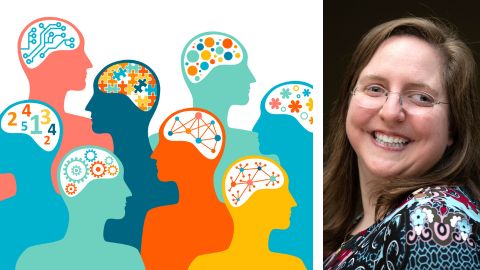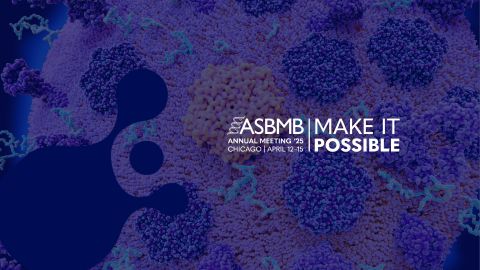Host vs. pathogen and the molecular arms race
Unraveling the battle between hosts and pathogens is key to unlocking new strategies for combating infectious diseases. The American Society for Biochemistry and Molecular Biology Annual Meeting new session on host–pathogen interactions will explore the latest breakthroughs in how microbes evade immune defenses, how hosts fight back and how these dynamic interactions shape disease progression and treatment.
Five talks from field experts examine systems such as the pneumonia-causing bacteria Legionella, Toxoplasma parasite, gut microbes and more. Don’t miss this deep dive into the molecular arms race on Sunday, April 13 at 1:50 p.m.

Tamara O’Connor, an associate professor of biological chemistry at the Johns Hopkins University School of Medicine, will lead the symposia and give a talk.
The goal of the session is to highlight the biochemical and molecular events dictating infectious disease outcomes, she said.
Of recent advances in the field, O’Connor highlighted new microscopy techniques that allow scientists to examine host–pathogen interactions in real-time at the single-cell level. This technology also allows researchers to visualize the molecular machinery used by pathogens.
She also noted key challenges that face the field. While single-cell analyses can provide a piece of the puzzle, stochastic variation between cells, the adaptability of pathogens and population heterogeneity mean that a systems-level approach is crucial for understanding the intricacies of host–pathogen interactions.
On the computational side, advancements in large-scale sequencing and computational biology are effectively detecting new phenotypic patterns and functional relationships. However, scientists’ ability to generate large data sets has begun to outpace their ability to validate the results, O’Connor said.
“It's a really exciting time, but we have to be careful we don't get ahead of ourselves,” O’Connor said. “It is now as important as ever to validate the predictions of computational models experimentally.”
Check out the full program schedule to get the most out of #ASBMB25.
Enjoy reading ASBMB Today?
Become a member to receive the print edition four times a year and the digital edition monthly.
Learn moreFeatured jobs
from the ASBMB career center
Get the latest from ASBMB Today
Enter your email address, and we’ll send you a weekly email with recent articles, interviews and more.
Latest in Careers
Careers highlights or most popular articles

Sketching, scribbling and scicomm
Graduate student Ari Paiz describes how her love of science and art blend to make her an effective science communicator.

Embrace your neurodivergence and flourish in college
This guide offers practical advice on setting yourself up for success — learn how to leverage campus resources, work with professors and embrace your strengths.

Upcoming opportunities
Apply for the ASBMB Interactive Mentoring Activities for Grantsmanship Enhancement grant writing workshop by April 15.

Quieting the static: Building inclusive STEM classrooms
Christin Monroe, an assistant professor of chemistry at Landmark College, offers practical tips to help educators make their classrooms more accessible to neurodivergent scientists.

Unraveling oncogenesis: What makes cancer tick?
Learn about the ASBMB 2025 symposium on oncogenic hubs: chromatin regulatory and transcriptional complexes in cancer.

Exploring lipid metabolism: A journey through time and innovation
Recent lipid metabolism research has unveiled critical insights into lipid–protein interactions, offering potential therapeutic targets for metabolic and neurodegenerative diseases. Check out the latest in lipid science at the ASBMB annual meeting.

